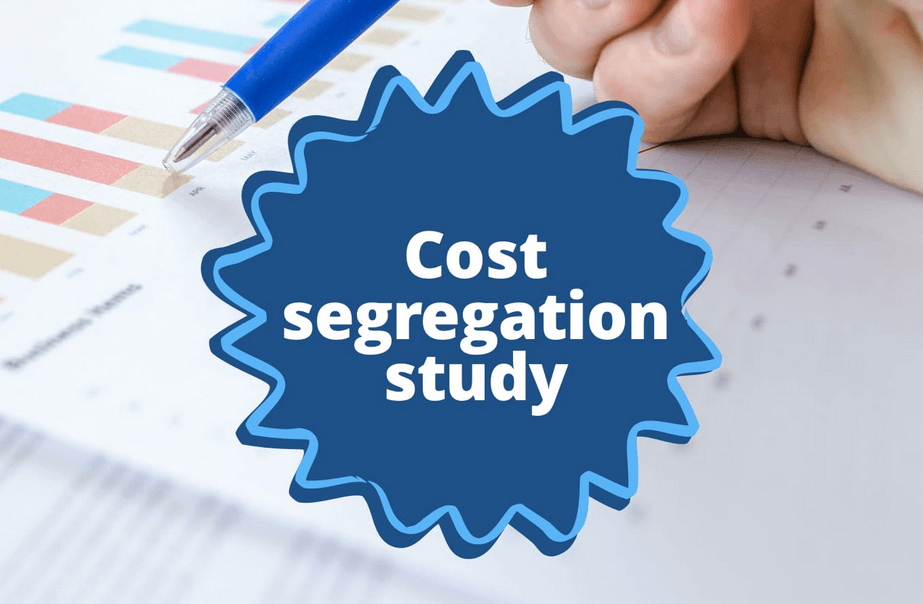📑Table of Contents:
Owning residential rental or commercial investment property offers significant tax benefits, one of the most valuable being depreciation. Depreciation allows property owners to recover the cost of their investment over time through annual tax deductions—without requiring additional out-of-pocket expenses.
However, the standard depreciation process for real property is lengthy. Residential rental properties are depreciated over 27.5 years, while non-residential properties span an even longer period of 39 years. These extended timelines result in relatively modest annual deductions, which can be limiting for property owners seeking immediate tax relief.

Accelerating Deductions with Cost Segregation
Thankfully, there’s a way to accelerate these deductions significantly—cost segregation. This method involves identifying and reclassifying specific components of a property, allowing for faster depreciation periods.
Cost segregation targets elements of the property that aren’t classified as real property, such as:
- Land improvements: Landscaping, swimming pools, paved parking lots, and fences.
- Personal property: Items within the building that aren’t structural components, including refrigerators, stoves, dishwashers, and carpets in residential rentals.
How Cost Segregation Works
By separating these components, owners can apply shorter depreciation periods:
- Personal property: 5 to 7 years
- Land improvements: 15 years
This acceleration doesn’t increase the total depreciation amount over the property’s life but shifts substantially to the earlier years. This upfront deduction can significantly reduce taxable income during the first few years of ownership.
The Basics of Depreciation
Depreciation is one of the most powerful tax-saving tools available to real estate investors. It allows you to deduct the cost of wear and tear on your property over time, reducing your taxable income and increasing cash flow. Here, we’ll explore how depreciation works, focusing on two key methods: straight-line depreciation and accelerated depreciation.
How Depreciation Works for Real Estate Investments
Depreciation applies to income-producing properties, such as rental homes, office buildings, and apartment complexes. However, the land itself is not depreciable—only the structures and certain improvements qualify.
Depreciable Life
The IRS assigns a useful life for properties:
- 27.5 years for residential rental properties.
- 39 years for commercial properties.
This means the cost of the property (minus the value of the land) is divided over this useful life, providing a yearly tax deduction.
Cost Basis Calculation
The property’s cost basis is the purchase price minus the value of the land. This adjusted value is used to calculate annual depreciation.
Example:
If you purchase a rental property for $350,000, and the land is valued at $75,000, the cost basis for depreciation is $275,000.
Potential Benefits of Cost Segregation
Accelerated Tax Deductions
Cost segregation allows investors to reclassify certain components of a property into shorter depreciation schedules. This results in larger deductions during the earlier years of ownership, reducing taxable income more quickly.
Improved Cash Flow
By accelerating tax savings, cost segregation frees up cash that can be reinvested into other opportunities, used for property improvements, or simply retained to strengthen financial stability.
Enhanced Return on Investment (ROI)
The increased cash flow from accelerated depreciation can improve the overall ROI for a property. This strategy helps investors recover their initial investment faster and boosts the profitability of the asset.
Enhancing Savings with Bonus Depreciation and Section 179
Cost segregation becomes even more powerful when combined with bonus depreciation and Section 179 expensing. These provisions allow property owners to deduct the full or substantial cost of personal property and land improvements in the first year, resulting in a potentially massive first-year tax deduction.
For example:
- Bonus depreciation lets you claim 100% of the qualifying asset’s cost in the first year (subject to current tax laws).
- Section 179 expensing offers another avenue for upfront deductions, particularly for business-use properties.

Timing Matters
To maximize the benefits, the ideal time to conduct a cost segregation study is during the year you purchase, build, or significantly remodel the property. Engaging a professional cost segregation specialist ensures an accurate and compliant analysis, unlocking the full potential of these tax savings strategies.
In conclusion, cost segregation offers property owners a powerful tool to boost cash flow and reduce their tax liability, particularly in the early years of property ownership. Accelerated depreciation and complementary tax incentives can help you maximize your real estate investments.





